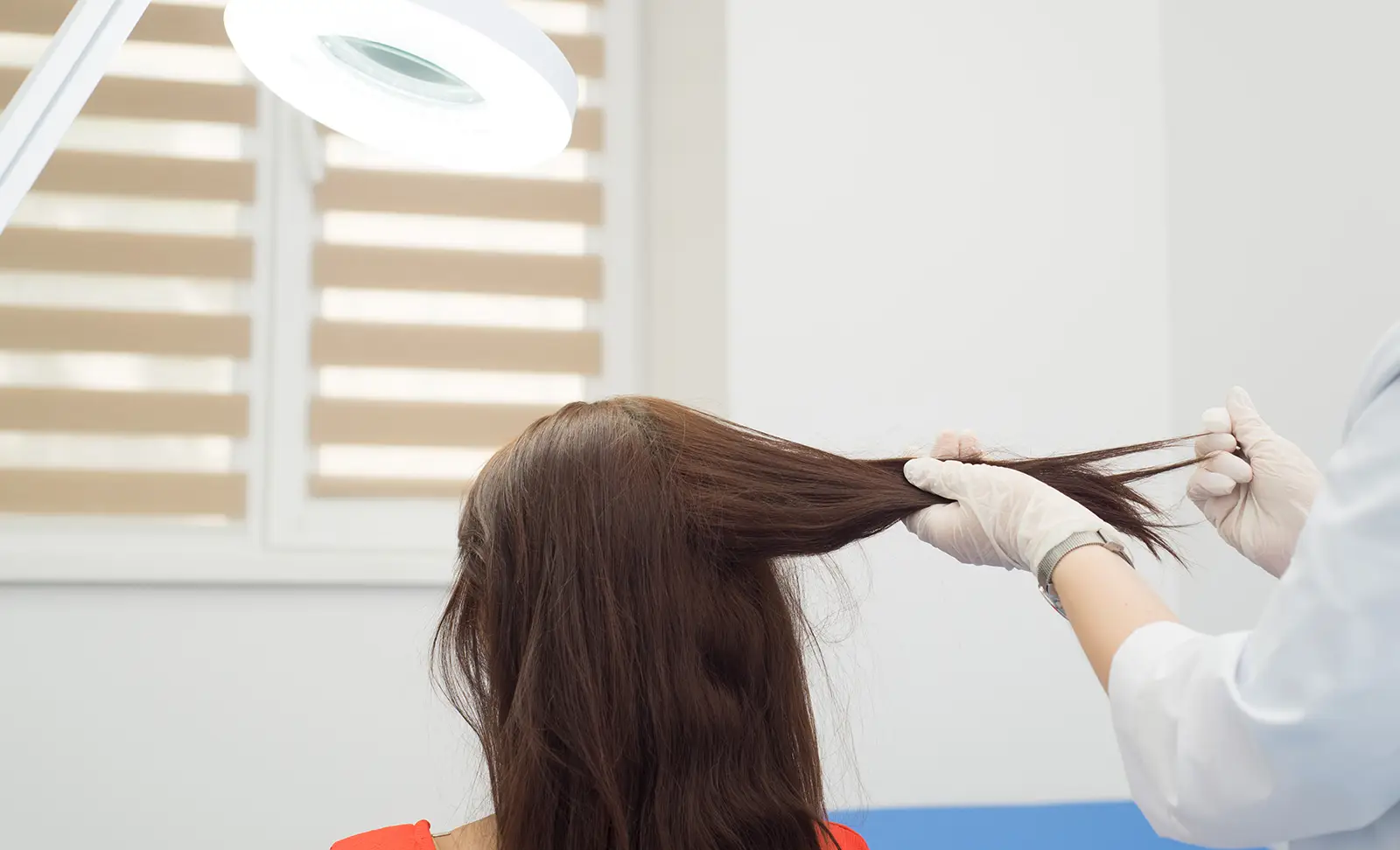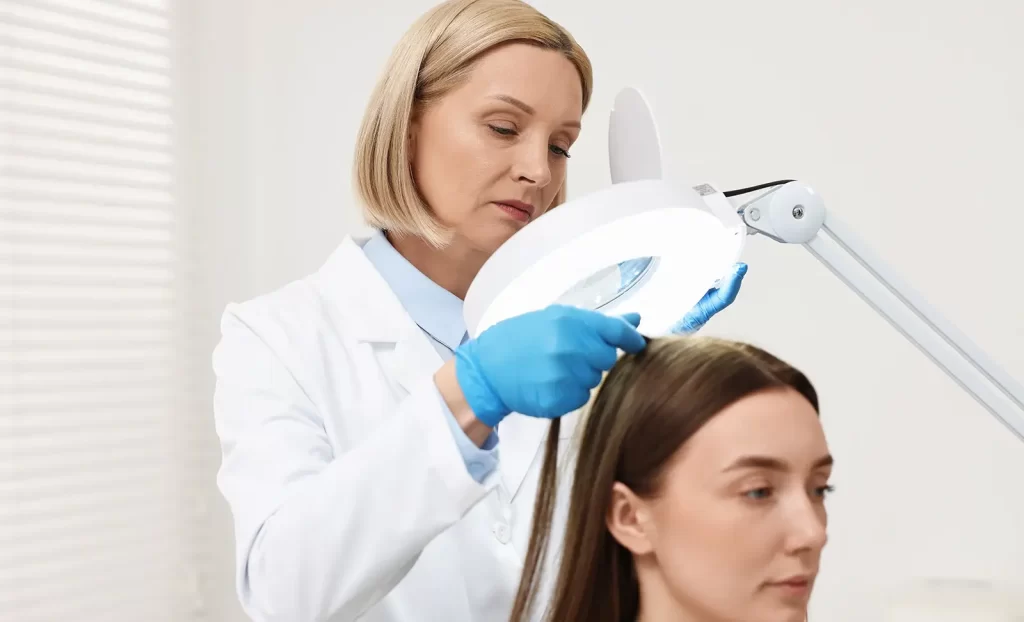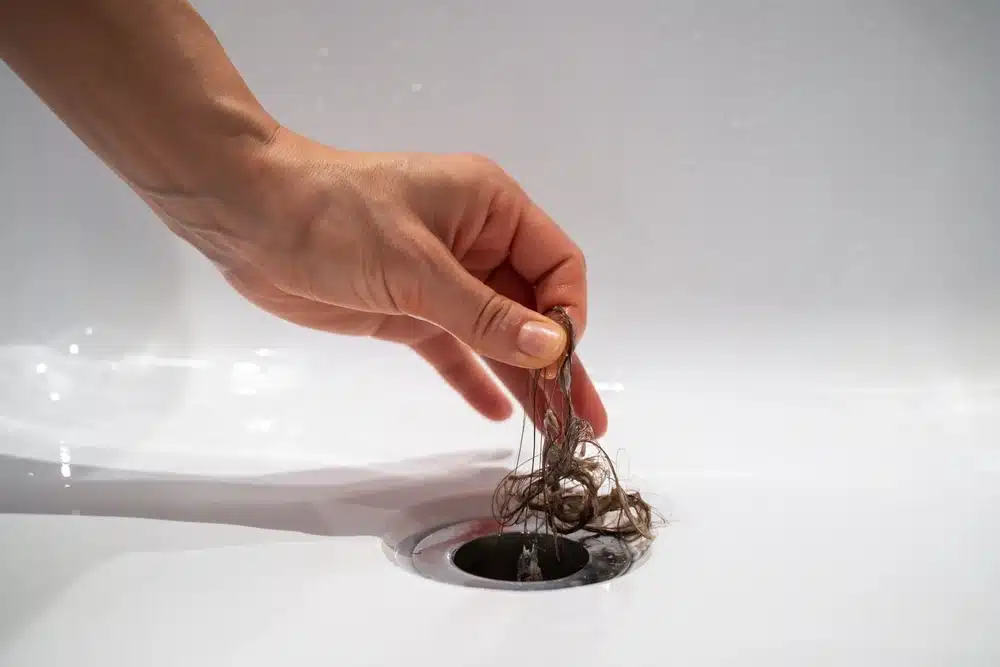Some people might become alarmed when they notice hairs coming out in the shower or on their hairbrush. However, this is perfectly ordinary most of the time – it’s a part of the hair’s natural cycle. There may come a point where hair shedding becomes more of a problem, though, to the point you may even notice hair thinning or balding on the scalp. In this case, you may wish to undergo a hair evaluation method to see if you are losing your hair and, if so, the extent of the problem.
What is the Hair Loss Pull Test?
Introducing the hair loss pull test. It is a simple hair evaluation method that can be performed by dermatologists, hair transplant surgeons, and trichologists to examine the extent of hair loss. It’s all about seeing how many hairs are in the shedding phase, also known as the exogen phase.
What is the Hair Growth Cycle?
To understand the hair pull test for hair loss, you should know about the hair growth cycle.
The hair growth cycle is the stages the hair goes through while it lives on your scalp. There are four main phases here: [1]
The Anagen Phase: When the hair grows.
The Catagen Phase: When the hair transitions from growth to rest.
The Telogen Phase: The resting period when the hair doesn’t grow at all.
The Exogen Phase: The shedding of the hair.
Different percentages of your hair are in each stage at one time. At any one time on a healthy scalp, 90% of your hair should be in the anagen phase, less than 1% in the catagen phase, and up to 15% in the telogen/exogen phase. If more than 15% of your hair is in the telogen/exogen phase at one time, that indicates a hair loss problem, which can be diagnosed with the hair loss pull test.
How to Get a Hair Loss Pull Test
You can get a quick and easy hair loss pull test from a healthcare provider. This might be a dermatologist who you’re seeing concerning hair loss, or it may be a hair transplant surgeon if you’re considering hair restoration surgery.
What to Expect from a Hair Pull Test for Hair Loss
It’s best to know what to expect before getting a hair pull test – hopefully, it will lessen any anxiety you may have. You’ll be pleased to know it’s a very straightforward evaluation method!
The first thing the medical professional will do is bundle around 50 hairs together, holding it between their middle fingers, index fingers, and thumb. Once these hairs are gathered, expect them to gently tug at the hair – don’t worry, it won’t be too hard or sudden. They will repeat this method a few times in different sections of the scalp, including your crown and at the sides of your head.
What is a Positive Pull Test Result?
A positive pull test result indicates that your hair sheds more than it should. It’s defined by more than 10% of the hairs getting pulled out at once. If this happens during the test, the medical professional will move forward in diagnosing the cause of this – there are many different causes of hair loss, some more likely than others.
Does the Hair Pull Test Hurt?
No – most of the time, hair pull tests are not painful. You will feel a slight tugging, but the medical professional won’t pull too hard. Plus, it doesn’t last long.
Can You Perform the Hair Pull Test at Home?
Technically, yes, as there is no special equipment involved. However, if you want a proper diagnosis, it’s best to go to a healthcare professional. Plus, they better know what to look for when performing the test, so their conclusion will be more reliable than yours. There’s also the slight risk that you might tug at the hairs harder than you should, causing some pain/discomfort and more hairs to come out than they should.
When Should You Get a Hair Pull Test?
Are you a good candidate for a hair pull test? Here are some signs that you are:
You’ve Noticed Hair Loss
If you’ve noticed your hair falling out more than usual, a hair pull test makes a lot of sense. It can get the ball rolling on a diagnosis.
You Have a Diagnosed Hair Loss Condition
Even if you already have a hair loss condition, a hair pull test can still be helpful. That’s because it allows the medical professional to see the extent of your hair loss, which can help with finding the best treatment.
You’re Trying a New Hair Loss Treatment
The hair pull method can also be helpful when you’re trying a new hair loss treatment to minimise hair shedding. In this case, the method can evaluate how well the new treatment works.
Your Hair Loss isn’t Caused by Androgenetic Alopecia
Some hair loss conditions don’t get flagged in the pull test, including androgenetic alopecia. If you have androgenetic alopecia, it’s best to get diagnosed another way.
Other Hair Loss Evaluation Methods
There are other hair loss evaluation methods other than the pull test – some of which get performed by a clinician and some which you can do from home.
The Wash Test
The wash test involves a clinician washing your hair in a sink after you haven’t washed your hair with shampoo for five full days. [2] After the washing, the clinician counts the number of hairs that have fallen out. The number gives a clear idea of how many telogen hairs are on the scalp.
The Hair Tug Test
The hair tug test involves taking a section of the hair, holding it from the root to the tip, and then pulling it apart in a tugging method. The point of this test is to see if there is any breakage. It doesn’t give you an insight into the hair growth cycle; rather, it shows how fragile the hair strands are.
The Hair Card Test
This is another hair evaluation method that should be performed by a professional. The test involves comparing a small coloured card against your hair to look closely at the shaft. Clinicians will be able to notice abnormalities this way, which can lead to a closer, more accurate diagnosis.
Comparing Your Hair with Old Photos
This one you can do at home. It’s not always easy to see how much hair you have lost over time, as it can happen slowly. If you’re unsure whether your hair has always been this thin or if it’s something that’s changed over time, look at old photos of your hair and then compare it to today (you can take a similar picture for a more accurate look). If you notice a difference in hair density or thinning, that could mean you have a hair loss condition and should seek a hair loss treatment.
What Causes Hair Loss?
It’s best to have an idea of what is causing your hair to shed. There isn’t one single condition that causes hair loss, but these are the most common:
- Androgenetic Alopecia
Androgenetic alopecia is also known as female and male pattern baldness and is undoubtedly the most common type of hair loss. As mentioned before, the hair pull method won’t be able to diagnose this, as the results will look normal.
- Alopecia Areata
Alopecia areata is a condition that occurs when the hair follicles get attacked by the immune system. [3] This causes the hair to fall out. Often, this type of hair loss leads to sudden fallout and round bald patches.
- Anagen Effluvium
Another form of alopecia is anagen effluvium. This occurs when the hair shafts endure damage during the anagen phase and often occurs after a person goes through chemotherapy.
- Telogen Effluvium
Telogen effluvium is a type of hair loss that people experience after going through a significant amount of stress. It happens pretty quickly, with the hair suddenly falling out. The good news is that telogen effluvium is a temporary type of hair loss and typically grows back before long.
- What to Do if You’re Losing Your Hair
If you are losing your hair, it’s best to speak to a medical professional (such as a dermatologist) to understand the root cause through diagnosis and evaluation methods such as the hair pull test. From there, you’ll be able to find the best hair loss treatment to help you regrow your hair. Some treatments are better for certain conditions than others. For example, a hair transplant works excellently for male and female pattern hair loss (check out our patients gallery to see the results) but doesn’t work as well for other types of alopecia like telogen effluvium.
- Pulling Test Hair Loss: In Summary
The hair loss pull test is an excellent way to see if your hair is shedding (in the telogen phase) more than it should be. It should always be carried out by a medical professional, as they know what to do and what to look for – performing it at home would likely lead to inconclusive results. There are other hair evaluation methods you can get, too, such as the wash method and the hair card test. Hopefully, one of these will help you understand why your hair is thinning or balding.
Are you ready to take control of your hair loss? If interested in a hair transplant, begin your journey with us today. Download our hair track app to schedule a no-obligation consultation. We look forward to hearing from you!
Sources:
- https://www.ncbi.nlm.nih.gov/pmc/articles/PMC9917549/#:~:text=Hair%20growth%20occurs%20in%20a,in%20a%20lifetime%20%5B2%5D.
- https://link.springer.com/referenceworkentry/10.1007/978-3-319-32383-1_115
- https://www.niams.nih.gov/health-topics/alopecia-areata#:~:text=Overview%20of%20Alopecia%20Areata,affects%20the%20head%20and%20face.





